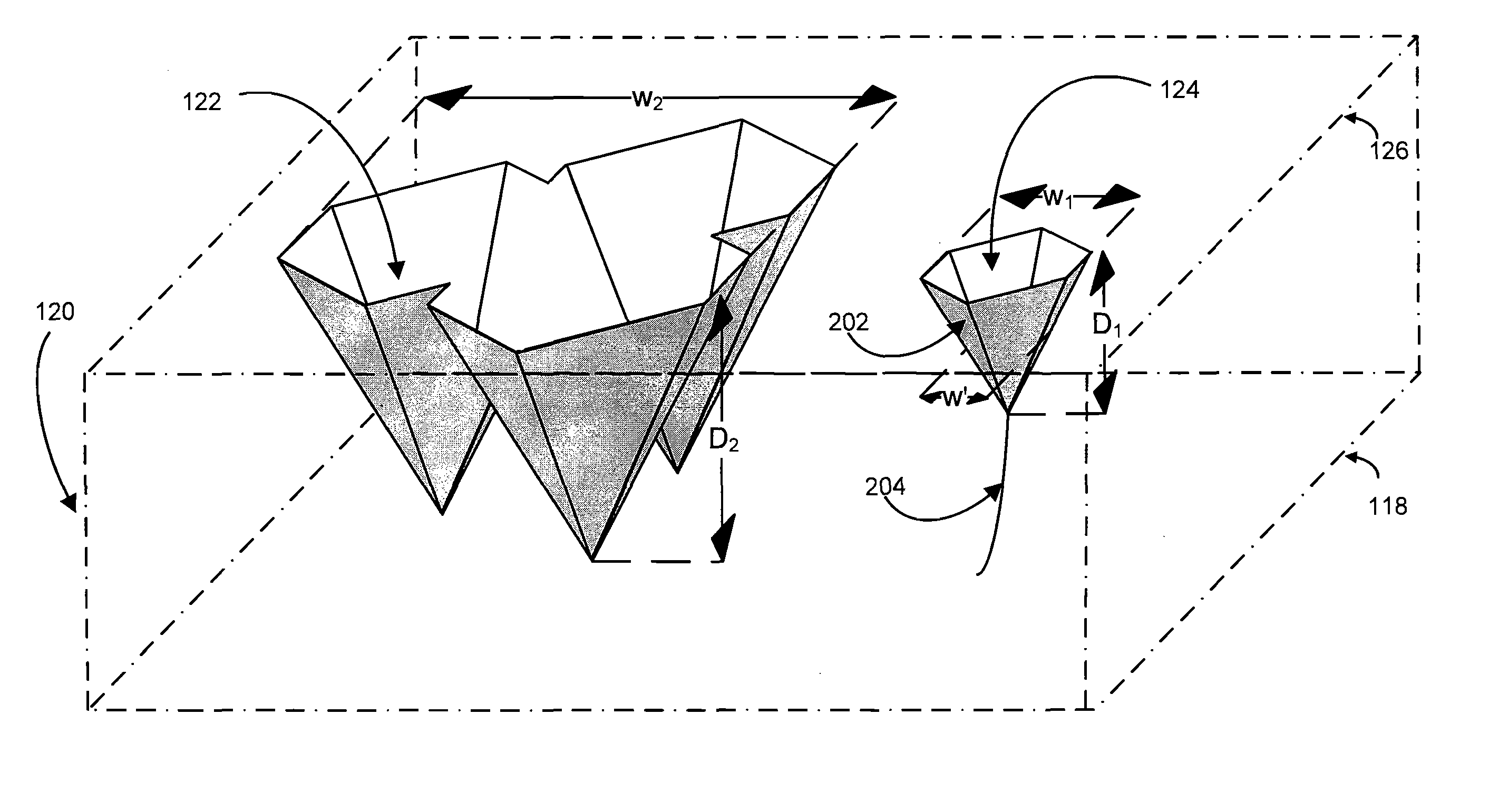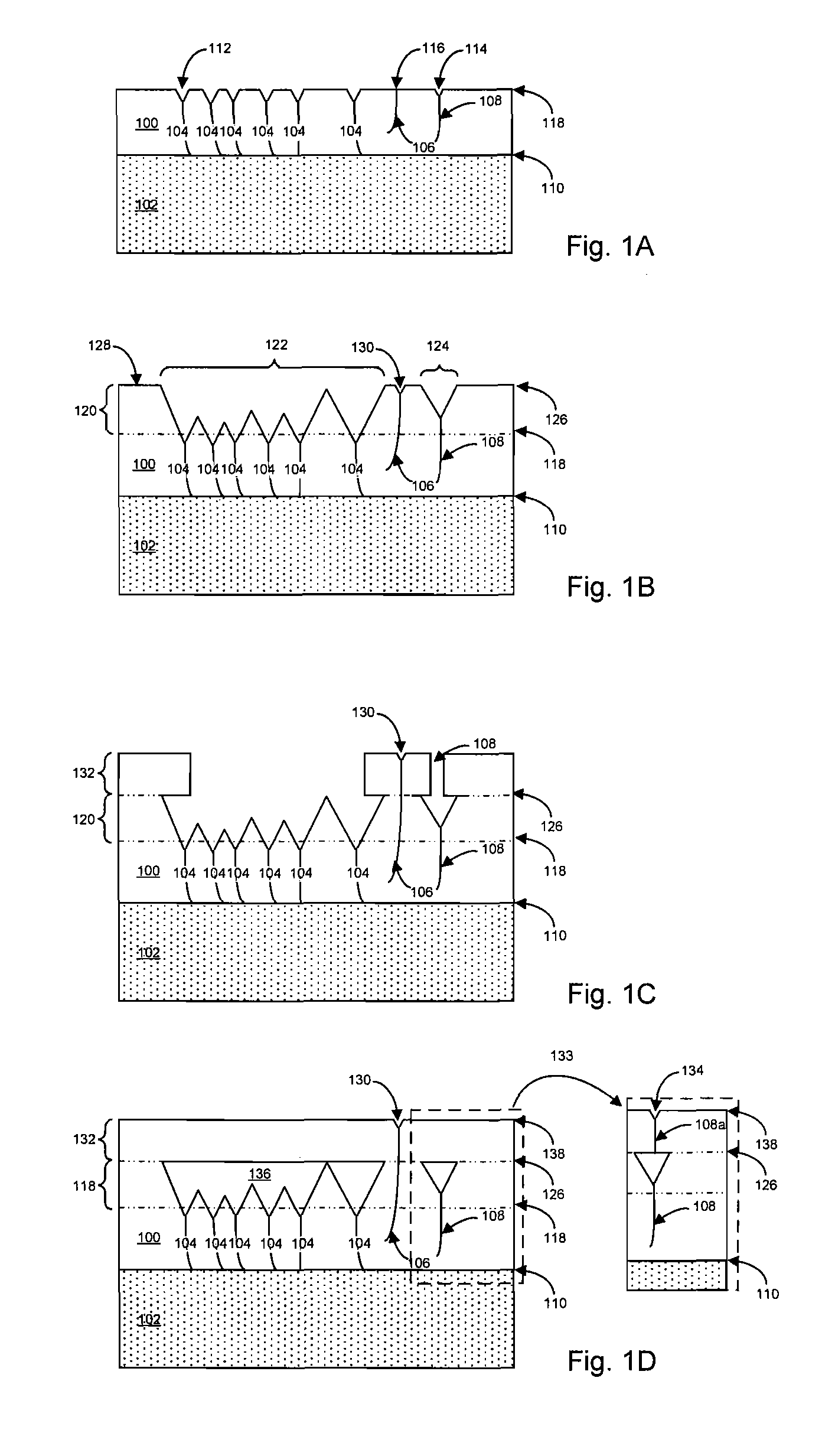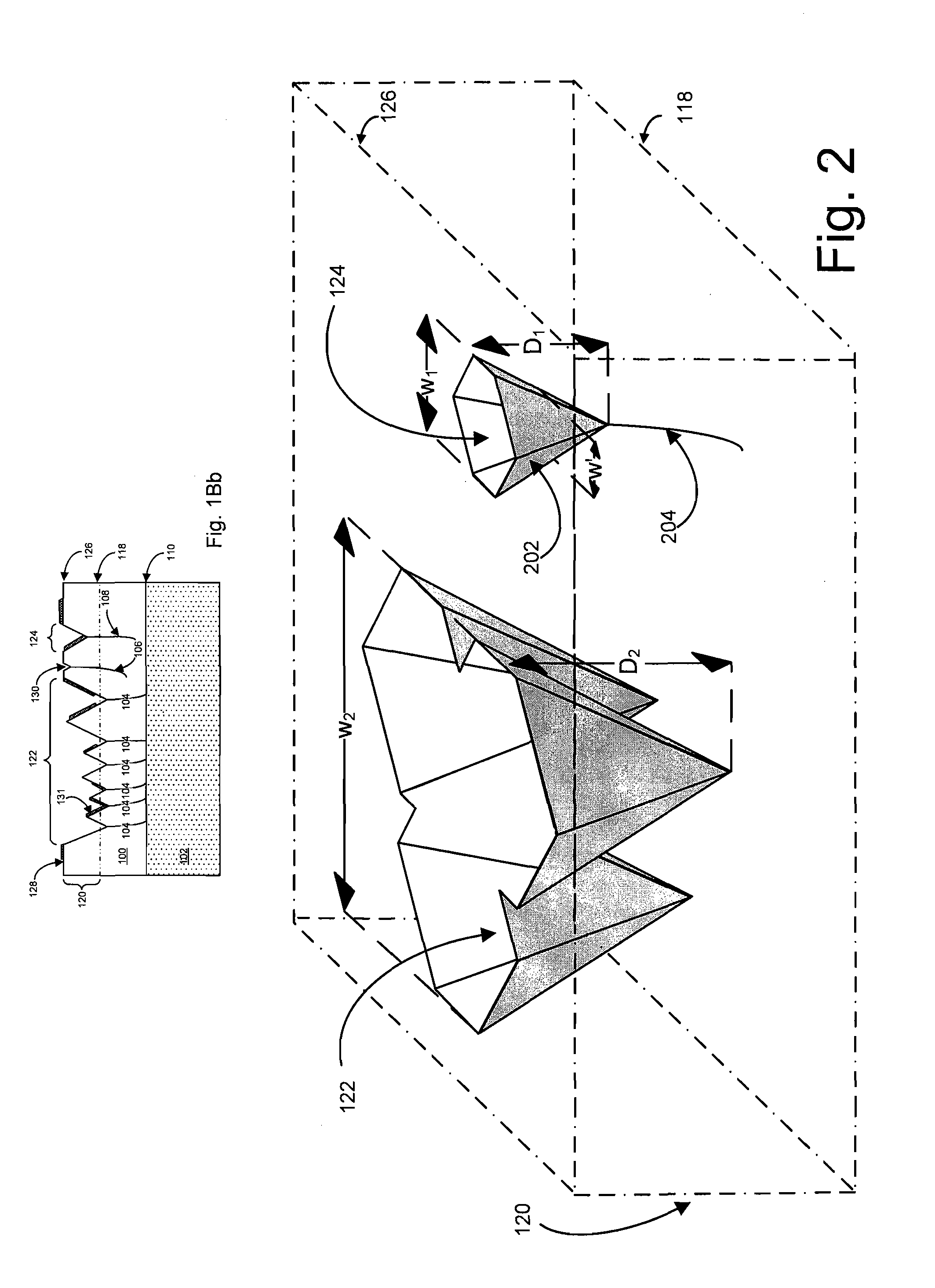Methods for improving the quality of structures comprising semiconductor materials
- Summary
- Abstract
- Description
- Claims
- Application Information
AI Technical Summary
Benefits of technology
Problems solved by technology
Method used
Image
Examples
examples
[0130]The following examples and reports of experiments illustrate etch pitting, enlargement of pits, amorphous Si3N4 deposition and epitaxial lateral overgrowth (ELOG) that were carried out on a two-step GaN substrate to develop the optimum protocols for the reduction of threading dislocations.
[0131]In the GaN etch pit studies, ex-situ aqueous KOH etching, molten KOH etching, and in-situ SiH4 etching were carried out at temperatures of 80° C., 260° C., and 860° C. with different etching periods in the range of 0 to 10 mins, respectively. Ex-situ aqueous KOH etching (Han et al. Scripta Materialia 59 1171 2008) and an in-situ SiH4 etching method were used to delineate etch pits associated with dislocations and to determine threading dislocation density. In general, a transmission electron microscope (TEM)-based technique could be used to reveal all types of threading dislocations (TDs) and to measure the TD density in GaN with high contrast over a relatively large area. As this requi...
PUM
 Login to View More
Login to View More Abstract
Description
Claims
Application Information
 Login to View More
Login to View More - R&D
- Intellectual Property
- Life Sciences
- Materials
- Tech Scout
- Unparalleled Data Quality
- Higher Quality Content
- 60% Fewer Hallucinations
Browse by: Latest US Patents, China's latest patents, Technical Efficacy Thesaurus, Application Domain, Technology Topic, Popular Technical Reports.
© 2025 PatSnap. All rights reserved.Legal|Privacy policy|Modern Slavery Act Transparency Statement|Sitemap|About US| Contact US: help@patsnap.com



